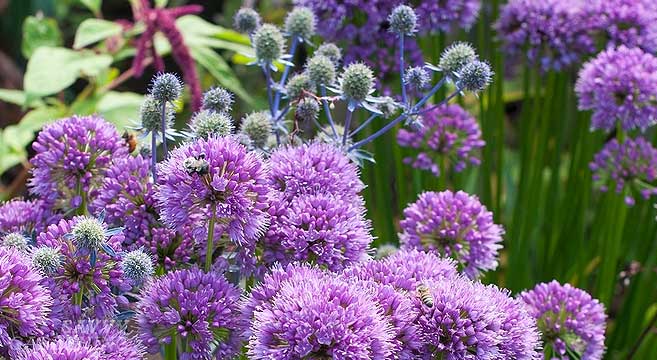This post may contain affiliate links. If you make a purchase through links on our site, we may earn a commission.
The start of a new year in gardening always generates all sorts of previews stating what’s new and notable when it comes to plants and products. A few emails in my inbox recently caught my attention. It started with ‘Garvinea Sweet’ gerberas being named the Canada Blooms plant of the year. A couple of weeks later, an email subject line enticed me with “2016 Perennial Plant of the Year.” A day later, I received another email proclaiming that 2016 is the year of begonias! How can so many plants be the “plant of the year?”
I decided to do a little digging and discovered that the plants I have seen touted lately are not just arbitrarily stamped with the “best” moniker. There is some careful thought that goes into choosing them. For the Canada Blooms choice, I read that during the 2014 and 2015 growing seasons at the University of Guelph trial garden program, ‘Garvinea Sweets’ were found to thrive in well-drained soil and continued to bloom from the time they were planted until winter arrived. So for those who attend the show this year, they’ll learn about a hardy annual that should thrive in their own garden.
After chatting with Diane Blazek, executive director of the National Garden Bureau, I learned that each year, the organization chooses four “Year of the” features: an annual, a perennial, an edible and a bulb. For this year, it is the begonia, delphinium, carrot and allium, respectively. “Our board chooses those classes based on popularity, breeding trends and innovations, ‘easy to grow’ and a wide selection of varieties,” says Blazek. “We vote and plan about three years out.”
Similarly, the Perennial Plant Association‘s members choose The Perennial Plant of the Year™. (Notice the trademark symbol?This program has been around since 1990.) According to the website, its purpose is “to showcase a perennial that is a standout among its competitors. Perennials chosen are suitable for a wide range of growing climates, require low maintenance, have multiple-season interest, and are relatively pest/disease-free.”

After learning about these various organizations, all those emails started to make a bit more sense. These aren’t trends, per se, they are legitimate recommendations that have testing and analysis behind them. The suggestions are great for new gardeners who are looking for different plants to introduce to their garden, but don’t quite know what to look for. And a seasoned green thumb may be inspired to try something they haven’t planted before. Personally, I was reminded that I’ve been wanting to plant ‘Honorine Jobert’ in my own garden for a couple of years, as per my 2014 post Add fall-flowering beauties to next year’s plant list. I need to make it happen this year.
main image courtesy of the National Garden Bureau



Leave a Reply